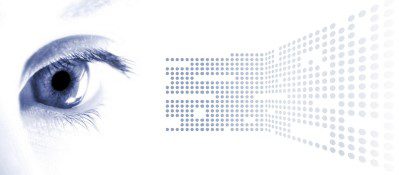Science v Spirituality: Let’s dare to go “there”

You know I looooove me some science. Science remains my first love: an ever-expanding doorway to the mysteries and beauties of life that brings me pure joy and awe. I used to argue a purely scientific viewpoint—especially during the decade I identified as “atheist”—that science could (eventually) explain everything. And then St Bonaventure’s eyes rocked my world.
3 Eyes of Knowing
Philosopher Ken Wilbur* presents three “eyes” of knowing (per St. Bonaventure, a 13th century philosopher of the mystics). In this sublime model, each eye can only see in or below its own realm, and a higher eye cannot be explained by a lower eye.
| Level | “Eye” | Mode | Input | Realm | Product |
| 1 | Flesh | Empirical | Sensory | Space, time, matter | Empirical truths |
| 2 | Reason | Rational | Mental | Ideas, images, logic and concepts | Rational truths |
| 3 | Contemplation | Contemplative | Causal | Transcendent | Ultimate insights |
This means:
- Science, based in the measurable material, can only “see” itself. It can’t look “up” into higher eyes of mind and spiritual.
- Thought, as mind, can reason at its own level and the level below it (material), but not see the Spiritual because Spirit cannot be reasoned.
- Spiritual transcendent truth is all-knowing and unknowable, but unprovable (unseeable) by lower realms.
Higher levels can explain lower levels, but not the other way around. You may sense God, but science will never “measure” it. If science could verify God, it would be a necessary reduction down two “eye” levels to the material.
Science is (Necessarily) Physical
Science is still young. Science emerged in the 1600s as a tool to counter superstition and mysticism. By design, science uses quantifiable, physical observation to predict, manipulate and control the physical environment. Scientific methods are based in what is measurable in the physical/material world, and apply three assumptions (from Harman*):
- The objective assumption—analyzed separately and independently from the observer
- The positivist assumption—only what is measurable is real
- The reductionist assumption—complex phenomena can be broken down to elemental components
The very basis of science is in what can be observed, measured and explained. Science, by its own design, invalidates non-physical, non-material aspects of human (and perhaps other animal and plant) experience.
Science and the Mind
Mind is non-physical and non-material, so how do we know we have one? “I think, therefore I am,” said the philosopher Rene Descartes. Mind is the aspect of a person that enables them to be aware of the world and their experiences, to think, and to feel; the faculty of consciousness and thought (Oxford Dictionary). It’s associated with intellect and personality. Sciences of the mind (like psychology) have tools to observe, measure and explain these non-physical attributes of mind…up to a point. When it comes to things like will, love, morality and religious beliefs, science (so far) falls short (https://scholar.princeton.edu/sites/default/files/cognition/files/limits_of_science.pdf).
This makes sense when we look through St. Bonaventure’s eyes. The Eye of Reason (mind) is above the Eye of Flesh (empirical). The higher eye can see/include the lower, but if the lower eye attempts to see the higher, it reduces it to its level…rather like a child explaining its parent’s job.
Not every aspect of human experience needs to be, or can be, reduced to scientific explanation.
Science and the Transcendent
Here is where things get too big for a blog, but I’ll do my best to make my point. Whatever that Big Thing is—transcendent of Descartes’s “I” or an elaborate projection of the Quantum self—doesn’t really matter. Suspend disbelief for a minute, if you must. Human history tells too many stories of transcendent/transpersonal experiences to dismiss them because they cannot be observed, measured or explained. At the very least, we may postulate a theory for science to support later, after it evolves more. Medical science now achieves such phenomenal survival rates in strokes and near death experiences (NDEs) that highly consistent patterns of transcendent experiences have emerged which cannot be observed, measured or explained. Nor can they be ignored. Maybe you’ve had such an experience—not an NDE or stroke, I hope—but something real, maybe even life-altering, but could not be observed (by others), measured or explained. I have.
Seeing the Continuum
Here is where the false dichotomy ends.
There is only one reality. Science, mind and spirit are not separate. All exist on a continuum. Not higher/lower. Not greater than/less than. Think of it as a sliding scale of oneness that you can tune in to with various aspects of your immense Being.
Science is the interpreter of the physical where we explore empirical wonders.
Slide your scale into Mind for the language of beautiful, rational truths.
Tune into Spirit to experience the contemplative realm of ultimate insights.
None are more or less true. All are necessary for a full understanding of the world.
So What?
I won’t pretend I can reduce the great mysteries of life to a 500-word blog…or at all. Any explanation is necessarily a reduction where I seek to offer expansion: consider the possibilities when you connect to whole-being well-being! What happens when you direct the formidable force of all that you are—body, mind, spirit/past, present, future/inner, outer—in the direction of your dreams?
[*All citations are from “Paths Beyond Ego,” 50 essays compiled and edited by Roger Walsh and Frances Vaughan]
***
Whole-being well-being expert, Liz Garrett, supports leaders in deepening embodied self-awareness so they can change their lives, their relationships, their work and, ultimately, the world.

Leave a Reply